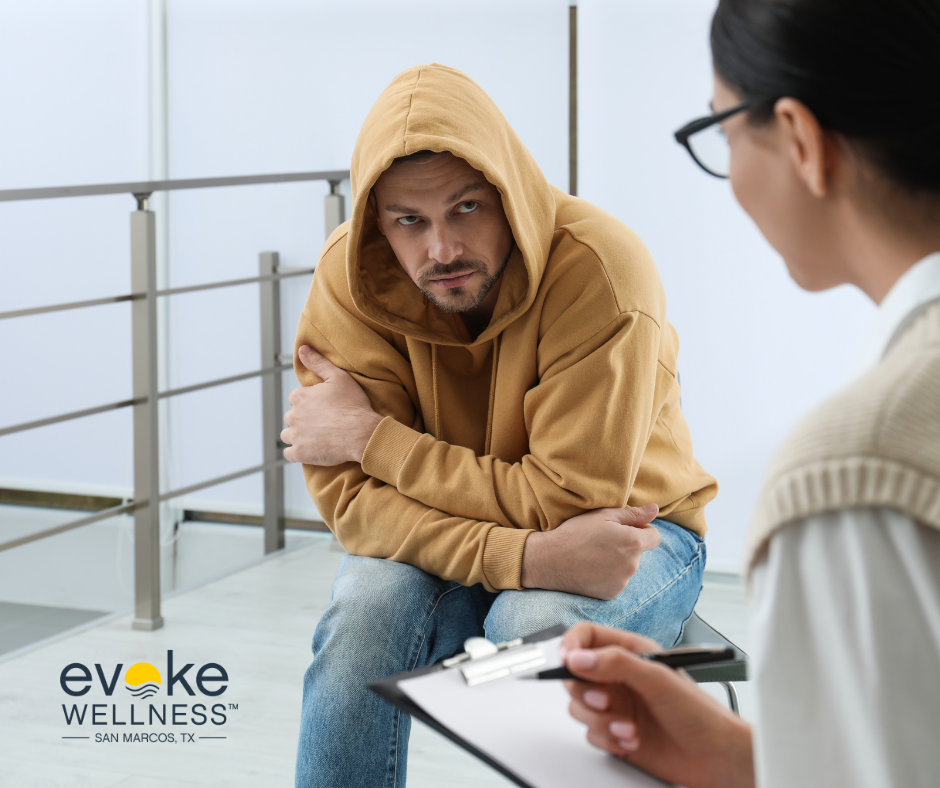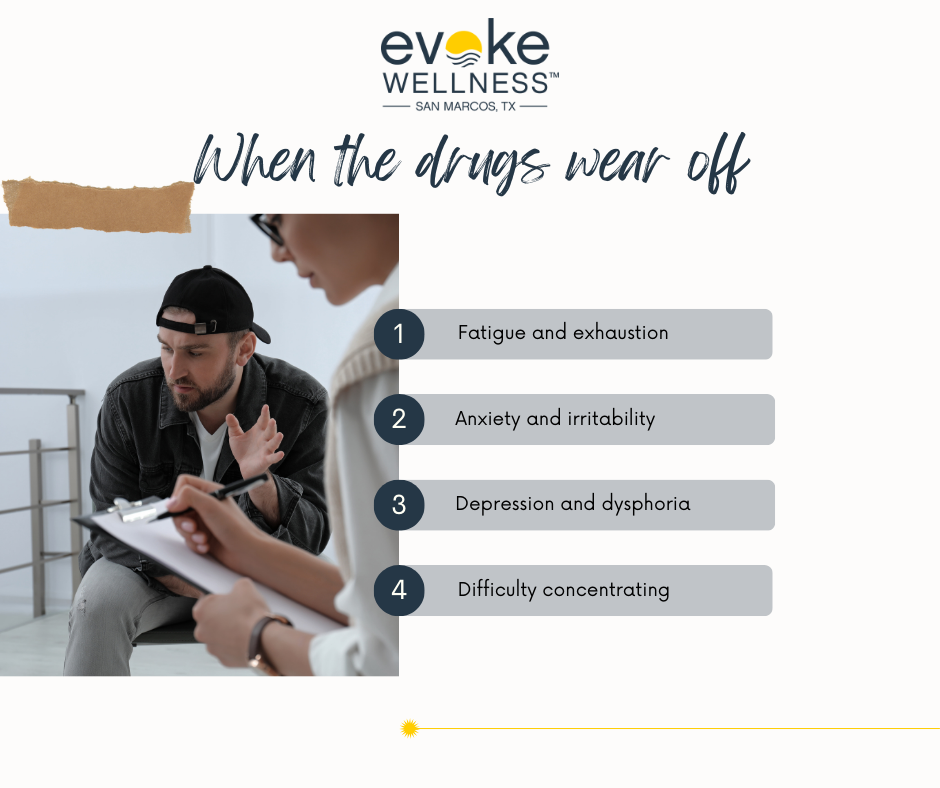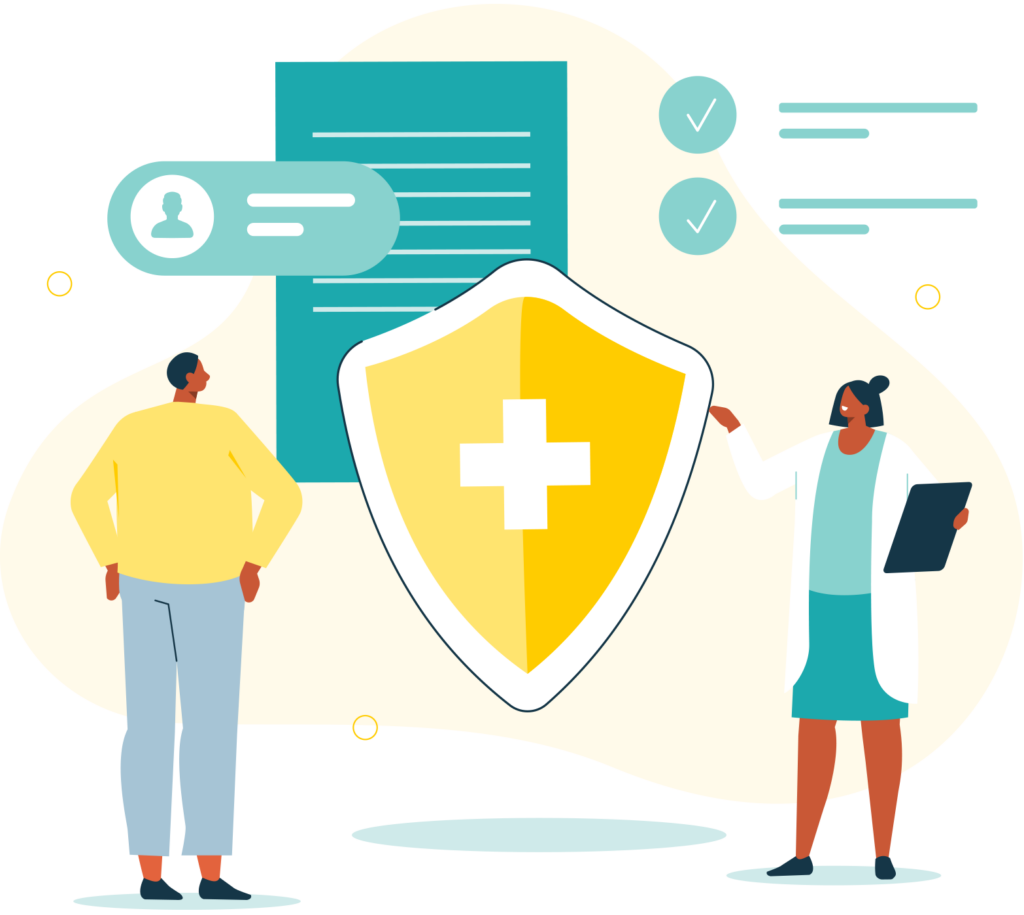As addiction continues to impact millions of lives, drug comedowns can be an extremely challenging experience. Recent studies indicate that up to 23 million Americans struggle with addiction, with many using substances like opioids, stimulants, and alcohol. When these substances wear off, comedowns can include depression, anxiety, fatigue, insomnia, and strong drug cravings. To help individuals safely manage comedowns, treatment options may include:
- Medical detox to clear drugs from your system
- Residential programs with 24/7 support
- Medication-assisted treatment to reduce cravings and withdrawal
- Holistic therapy for mental and physical wellbeing
- Group therapy to build a sober network
- Prescription drug addiction treatment specifically for misused medications
With compassionate, evidence-based treatment, a smooth landing after substance use is possible. Understanding available options empowers you to make informed decisions about your recovery journey.
Together, let’s embrace the journey to recovery and the promise of a new beginning. Call us at (833) 503-0734 today or reach out online.
The Comedown
When the euphoric effects of drugs start to fade, an uncomfortable “comedown” period follows. As the drug leaves your system, you experience:
Physical Symptoms
Physically, you may suffer headaches, muscle aches, nausea, and insomnia. Stimulant comedowns are especially harsh, causing intense cravings and mood swings.
Psychological Impact
Mentally and emotionally, the comedown brings an overwhelming sense of emptiness and hopelessness – feelings that can linger for days or weeks. This “crash” increases risks of self-harm and addiction relapse.
Duration Factors
The severity and duration depend on the substance, dosage, and your biology. Opioid withdrawals start within 12 hours, while stimulants like cocaine produce comedowns within 1-3 days. Proper rest, hydration, and medical support can ease comedown symptoms.
Withdrawal Symptoms and Managing a Comedown
The crash after using drugs can bring intense physical and psychological symptoms as your body re-adjusts. Common comedown effects include fatigue, depression, anxiety, irritability, and insomnia.
Recognizing Withdrawal
- Nausea, vomiting, sweating, tremors
- Headaches, muscle aches, fever
- Intense cravings for the drug
Managing the Comedown
While withdrawal symptoms gradually subside, self-care strategies can ease the transition:
- Stay hydrated and nourished
- Get plenty of rest
- Distract with low-key activities
- Lean on support systems
With medical monitoring, certain medications may help alleviate specific withdrawal effects. However, pushing through this phase drug-free allows your brain chemistry to fully re-calibrate.
Medical Detox for Safe Drug Withdrawal
Safe medical detox is crucial for managing drug comedowns and withdrawals. Supervised by healthcare professionals, detox helps your body rid itself of addictive substances.
Inpatient Care
Inpatient or residential detox provides 24/7 monitoring and support. This controlled environment minimizes relapse risks during the difficult initial withdrawal phase.
Medication-Assisted Treatment
FDA-approved medications can ease withdrawal symptoms and cravings. Combined with counseling, this evidence-based approach improves treatment outcomes.
Holistic Therapies
Detox centers may incorporate holistic mind-body practices like yoga, meditation and massage. These complementary methods promote healing and manage stress during recovery.
With proper medical supervision, detox allows you to withdraw from drugs safely before transitioning into comprehensive addiction treatment. This vital first step guides you through acute withdrawal toward lasting sobriety.
Residential Treatment Programs
Residential or inpatient drug treatment provides a stable living environment away from triggers and access to substances. This allows you to focus solely on recovery.
Safe, Supportive Environment
- 24/7 medical supervision and support
- Structured daily schedule of therapy
- Nutritious meals and healthy activities
- Peer support and community atmosphere
Comprehensive Care
Inpatient programs offer a full continuum of evidence-based services tailored to your needs. This holistic approach treats underlying issues driving addiction.
Duration Promotes Lasting Change
Typical stays last 30-90 days. Longer treatment duration is linked to higher rates of sustained sobriety after discharge. The time allows you to build the coping skills and support system for lifelong recovery.
Medication-Assisted Treatment Options
Medication-assisted treatment (MAT) combines behavioral therapy and FDA-approved medications to treat opioid and alcohol use disorders. This evidence-based approach helps:
- Manage withdrawal symptoms
- Prevent relapse
- Improve treatment outcomes
Opioid Addiction Treatment
Medications like buprenorphine, methadone, and naltrexone help reduce opioid cravings and normalize brain chemistry disrupted by prolonged misuse. Combined with counseling, MAT doubles a person’s chances of recovery.
Alcohol Use Disorder Treatment
For alcohol addiction, medications like acamprosate, disulfiram, and naltrexone can be prescribed to ease withdrawal, reduce cravings, and support sobriety. Coordinated with therapy, MAT improves treatment adherence.
Proper medication management under medical supervision is crucial for safe, effective MAT. Speak to an addiction specialist about which medication may benefit your recovery journey.
Holistic Therapies to Lessen Withdrawal Discomfort
Withdrawal can be an extremely challenging experience, both physically and emotionally. Holistic therapies offer natural, medication-free ways to manage symptoms and support overall well-being during this process.
Mind-Body Techniques
- Meditation and breathwork practices can help reduce anxiety, promote relaxation, and improve sleep quality during withdrawal.
- Gentle yoga postures and movements aid in relieving muscle tension and restoring balance.
Supplements and Herbs
Certain supplements and herbs may ease specific withdrawal symptoms when taken under medical supervision, such as:
- L-theanine for anxiety relief
- Magnesium for muscle cramps and restlessness
- Valerian root for improved sleep
Massage Therapy
The healing power of therapeutic touch can work wonders. Massage helps:
- Relieve muscle aches and pains
- Lower blood pressure and heart rate
- Promote emotional calmness and relaxation
By combining holistic practices with professional addiction treatment, you give your mind and body extra support during the challenging withdrawal phase.
Group and Individual Therapy for Support
Peer Support Groups
- Foster a sense of community and belonging
- Share experiences and coping strategies
- Gain encouragement from others on the same journey
Individual Counseling
Group therapy complements individual counseling sessions. One-on-one talk therapy explores root causes and develops personalized relapse prevention plans.
Counselors specializing in addiction provide a safe, non-judgemental space. You’ll process emotions, build self-awareness, and practice mindfulness techniques. Cognitive-behavioral therapy is a proven approach for breaking unhealthy patterns.
The support system helps manage triggers, cravings, and negative thought cycles during comedowns. Both group and individual therapy empower lifelong sobriety.
Frequently Asked Questions About Managing Comedowns
What is a drug comedown?
A comedown refers to the unpleasant physical and psychological effects experienced after the high from drugs like stimulants, hallucinogens or MDMA wears off. Symptoms can include fatigue, depression, anxiety and insomnia.
How long do comedowns last?
The duration varies based on the substance, dosage and individual factors. Stimulant comedowns may last 1-3 days, while psychedelics or MDMA can cause effects lingering up to a week.
Are comedowns dangerous?
While not life-threatening for most individuals, severe comedowns increase risks like suicidal thoughts, psychosis and heart issues. Seeking medical support for prolonged or intense symptoms is advisable.
How can I ease comedown symptoms?
- Stay hydrated and nourished with nutritious meals
- Get adequate rest and sleep
- Practice stress relief like meditation or light exercise
- Avoid taking more drugs to self-medicate
- Consider supplements like 5-HTP for serotonin replenishment
When should I seek professional help?
Seek immediate medical attention for severe symptoms like chest pains, rapid heartbeat, extreme agitation or suicidal thoughts. Ongoing counseling and addiction treatment programs aid in recovering from substance issues.
Conclusion
In conclusion, drug comedowns can be challenging but overcoming addiction is possible. With the right treatment plan tailored to your needs, whether it’s medical detox, residential care, medication-assisted therapy, holistic approaches, group counseling or a combination, you can get back on track and live a fulfilling life in recovery. Don’t face this alone. Reach out for help today and take the first step towards healing. You have support. With commitment and compassion, we can guide you to a brighter future free from addiction. There are many roads to recovery. Let us walk with you.
Begin Your Journey with Evoke Wellness at San Marcos
If you or a loved one is considering treatment, Evoke Wellness at San Marcos invites you to contact us. Our compassionate team is ready to answer your questions, discuss your needs, and help you take the first steps toward recovery. At Evoke Wellness, you will find more than just a treatment program – you’ll discover a community dedicated to your wellness and success. Together, let’s embrace the journey to recovery and the promise of a new beginning. Call us at (833) 503-0734 today or reach out online.



